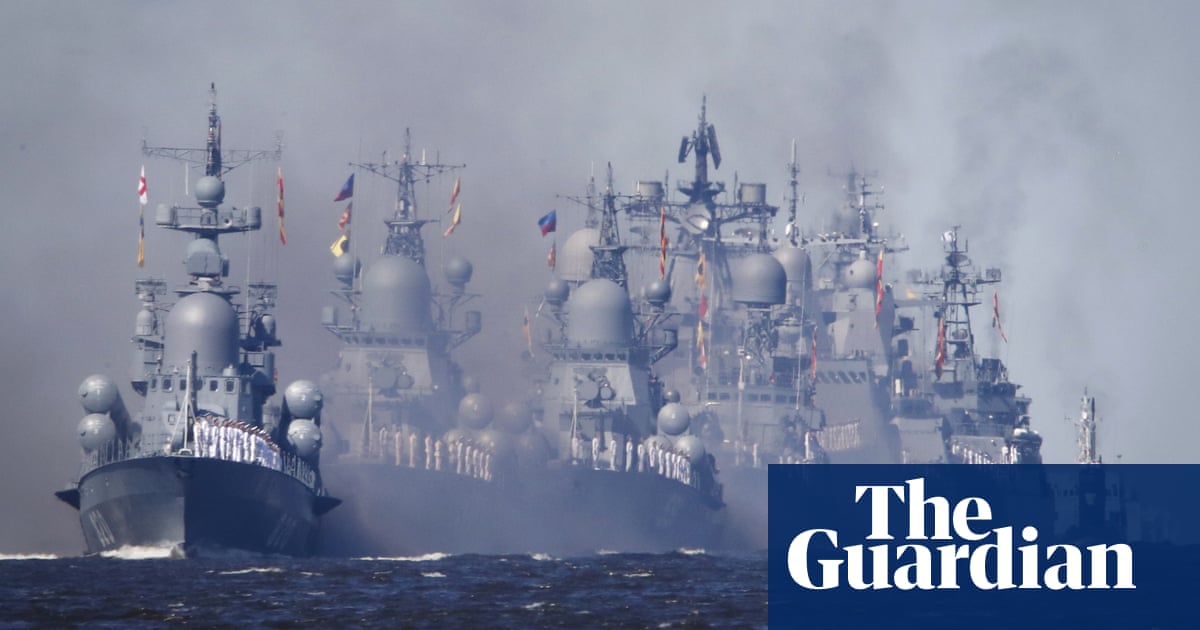- Reaction score
- 9,165
- Points
- 1,160

Putin gambled – and lost his ability to threaten Nato’s southern flank
Russia’s ability to threaten Nato’s southern flank has evaporated
Russia pulling out of the Med? And locked out of the Baltic?
The expansion of Nato in the three years since Russia widened its war on Ukraine has turned the Baltic Sea – once contested between the transatlantic alliance and Russia – into a Nato lake. And now, Russia seems likely to lose its naval presence in the Mediterranean.
With the increasingly heavily-armed Baltic States on one side and new Nato members Sweden and Finland – each with their own powerful anti-ship capabilities – on the other, the Baltic is becoming extremely perilous for the Russian fleet if it had to operate there during a clash with Nato.
Meanwhile, the Russian navy is getting squeezed out of the Mediterranean, too. Nearly two months after the fall of Bashar Al-Assad’s regime in Syria, Russian ships have begun arriving in the Syrian port of Tartus – the Russian navy’s main Mediterranean base – as part of an apparent evacuation.
It seems thousands of Russians and the warships they crew are about to depart Syria … and the region. At best, the Russian navy in the Mediterranean “faces uncertainty,” according to a new report from the Royal United Services Institute in London. At worst, the Russians are leaving the Med for good.
The implications for European security are enormous. There are alternative bases for Russian forces in southern European and Middle Eastern waters – but not many. And they’re far from being true replacements for Tartus.
As a surprise offensive by a restive coalition of opportunistic rebel groups pushed back Assad regime forces in Syria in November, Russian forces supporting the regime retreated to their two main bases: Tartus and Khmeimim Air Base. They hunkered down there for weeks as Moscow negotiated with the new rebel government for continued access.
The negotiations appear to have failed. By late January, the Russian garrison in Syria was staging its heavy equipment in Tartus, evidently planning to ship it out ahead of a complete Russian departure from the war-torn country.
The Soviet Union, and later Russia, maintained a token presence in Tartus between the 1970s and the commencement of the Syrian civil war in 2011. The civil war changed everything. Sensing an opportunity, the Kremlin boosted support for Assad’s embattled regime. In 2015, Russian troops and heavy air support arrived – and helped Assad’s ramshackle army fight back. Iranian-backed Hezbollah troops also arrived to back the regime. The front lines stabilized.
Collecting its reward, in 2017 Russia signed a 49-year contract guaranteeing it wider access to Tartus. When the Russian navy reinforced its Black Sea Fleet ahead of the February 2022 wider invasion of Ukraine, the ships staged from Tartus. Then, when Turkey closed the Bosporus Strait to foreign warships that same year, Tartus became Russia’s only naval base for operations in the Med.
For many years, the base was critical to Russian power projection across southern Europe and the Middle East. Russian navy warships could refuel and rearm in Tartus, removing the need for lengthy and taxing voyages back to Russian waters. Lodged in Tartus, the Russians weighed heavily on the security of southern Europe and adjacent regions.
Gaining access to Tartus gave Russia a southern toehold. By the same token, losing Tartus could eliminate that toehold. Especially considering the Russian navy is increasingly built around smaller “green-water” vessels such as missile corvettes with limited range and endurance.
For Russia, there are three obvious alternatives to Tartus. None of them is great.
There’s Algeria, but “it is not clear that the strategic calculus would favour hosting a permanent Russian presence,” RUSI noted. Syria traded access to Tartus for military assistance that forestalled, by a decade, the eventual rebel victory. But what do the Algerians get in return for a big and lasting Russian presence in the country? There’s no “clear imperative in Algiers’ favour,” according to RUSI.
Impoverished Port Sudan on Sudan’s Red Sea coast might be more welcoming for a large contingent of Russians. “However, negotiations over establishing a military maritime foothold, despite being several years in, are still floundering,” RUSI explained. “This in itself would likely make Port Sudan a poor option as an immediate Tartus alternative.”
Operations in the Med from Port Sudan would also require transiting the Suez Canal, which could be an unwelcome constraint.
Libya could work. “Russia already operates the Al Kadim air base in this region,” RUSI pointed out. “With a concentration of effort in eastern Libya, Tobruk and potentially also Benghazi could offer safe haven to a homeless Russian Mediterranean Fleet.”
But Tobruk in particular might not be ready. “With limited repair facilities and no dry dock, few berths of sufficient size and limited opportunities for expansion, long-term investment in a permanent presence would likely present technical challenges,” RUSI noted.
Moreover, “any Russian presence in Libya would at a minimum be dependent on Turkish goodwill,” according to the London think-tank. And Turkish goodwill is in short supply as Russia’s war of aggression in Ukraine grinds toward its fourth year.
As cargo ships begin embarking the Russian garrison in Tartus, Russian admirals should worry. “If the Russian navy loses this access, it will not cease to be a regional player,” RUSI explained, “but its presence will be far more diluted.”
And this naval dilution will occur at the same time the Russian fleet loses wartime access to the Baltic. In a showdown with Nato, Russia will have difficulty mounting any serious threat to the Alliance’s southern flank. Its ships would only be able to deploy from its Arctic bases. These are ice free all year round (unlike St Petersburg in the Baltic) but the trip around the North Cape, down through the Greenland-Iceland-UK Gap and eventually through the Straits of Gibraltar would be a long and dangerous one in wartime.
In siding with a brutal dictator in Syria and then opting to invade Ukraine so that the Bosporus was closed, Russia gambled its southern strategic presence on Europe’s maritime frontiers. Putin appears to have placed his bets poorly.







